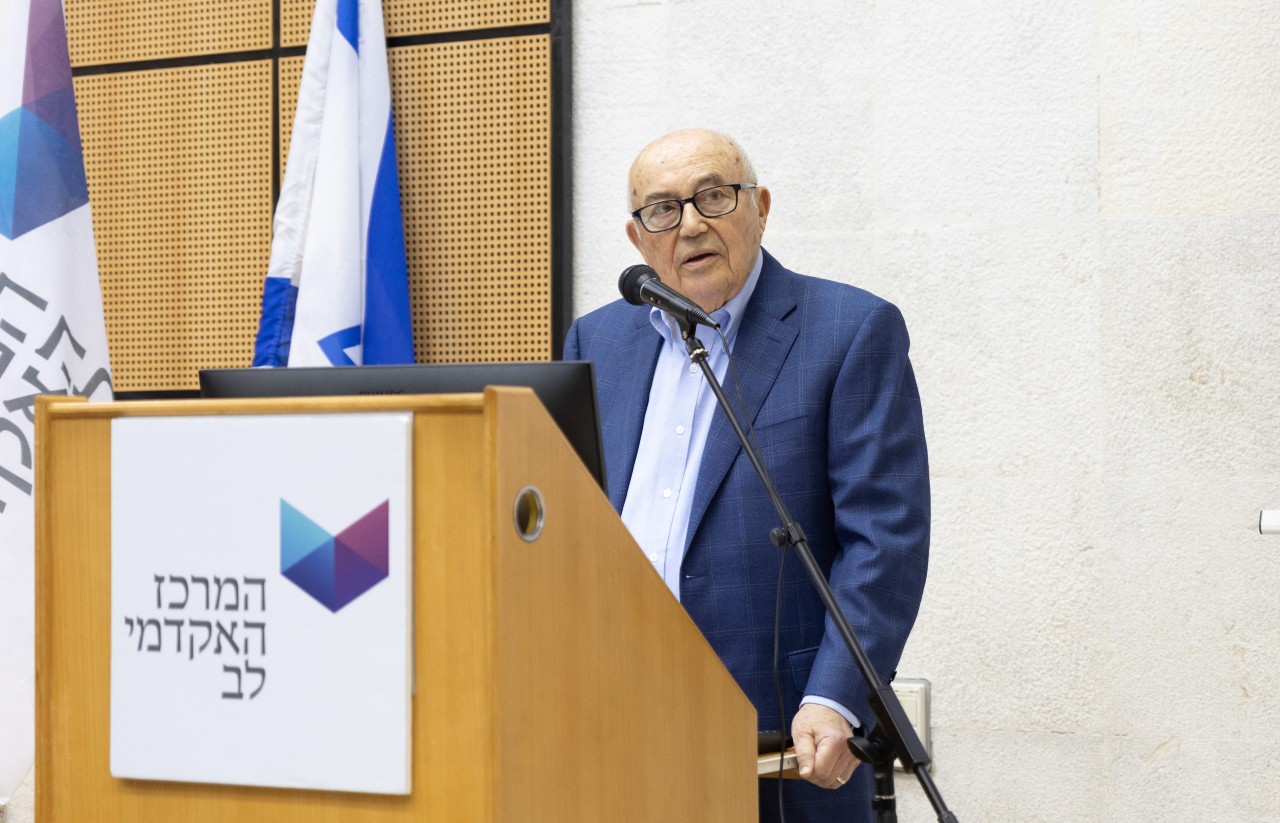This website uses cookies to ensure you get the best experience on our website. privacy policy and terms of use.
May 1, 2023
San Diegans are well familiar with the name Dr. Andrew Viterbi from the scientific research buildings bearing his family’s name as a result of his philanthropy, as well as from his co-founding of Qualcomm.
Just last month, the University of California San Diego broke ground on the Viterbi Family Vision Research Center, which is supported by a $50 million gift he made made in 201i.
Yet recently a new audience, situated more than 7,500 miles away, got to hear firsthand from the famed electrical engineer who invented the Viterbi algorithm, which is used in most digital mobile phones and digital satellite receivers, and in diverse fields such as data recording, voice recognition, and DNA sequence analysis.
On May 1, Viterbi — the Presidential Chair Professor of Electrical Engineering at the University of Southern California’s Viterbi School of Engineering — gave Jerusalem College of Technology students a lecture on the history of digital communication. He delivered the lecture in honor of his late friend and mentor Solomon Golomb, a mathematician, engineer, and professor of electrical engineering at USC who is partially credited with the creation of the game Tetris.
“Both Andrew Viterbi and Solomon Golomb loom large on the world’s stage, but even more so and very intimately at the University of Southern California,” said Alan Wilner, Distinguished Professor of Electrical and Computer Engineering at the Viterbi School of Engineering. “You could say that Andy and Sol have been entangled as quantum particles both personally and professionally for well over half a century.”
Viterbi’s lecture in Jerusalem covered what he called the three stages of digital wireless communication — innovation, implementation, and exploitation — and how it has affected society for better or worse. He focused mostly on the pioneers who marked the “Initial Wireless Innovation Era” from 1800 to 1950 and the “Digital Wireless Implementation Era” from 1958 to 2020.
From 1997 until 2001, Viterbi served on the President’s Information Technology Advisory Committee. A recipient of many distinguished awards, he won the National Medal of Science under President George W. Bush in 2008 for the Viterbi Algorithm, as well as for his contributions to Code Division Multiple Access, or CDMA, wireless technology that transformed the theory and practice of digital communications.
“It’s an unusual pleasure to welcome Dr. Andrew Viterbi to the JCT campus,” said Jerusalem College of Technology President Chaim Sukenik. “The Viterbi family came to the United States fleeing World War II. Dr. Virterbi worked as an engineer and worked for companies developing exciting new technologies, and he was a central part of that.”
The relationship between Viterbi and Golomb, Sukenik said, is notable because “they were not only personal friends but worked closely together for many years.”
Golomb also received the National Medical of Science, his award from President Barack Obama in 2013. USC’s Wilner noted the significant role that Jewish identity played in the journeys of both Viterbi and Golomb, who died in 2016.
“In a postcard of USC announcing Sol will receive the National Medal of Science, I looked closely and saw he wasn’t holding a technical book but a chumash — the five books of Moses,” Wilner said. “Sol felt a special connection to JCT. There is a room in USC that chronicles the Viterbi family and includes Andy’s monumental technical achievements. Importantly, on the display for all to see is the Jewish identity of the Viterbis, including their Sephardic family history and Andy’s Italian Jewish history.
“Both Andy and Sol bring to mind the passage in the Talmud that describes the three characteristics that mark the DNA of the Jew — merciful, modestly bashful, and performing acts of kindness. The personal and professional stories of Andy and Sol in all three categories abound.”
Today, Solomon Golomb’s daughter Dr. Beatrice Golomb is head of the UC San Diego Golomb Research Group, which studies different conditions related to oxidative stress and cell energy impairments.
Solomon Golomb made a donation to JCT to hold an annual lecture in memory of his father, Rabbi Elhanan Zvi Golomb. After her father’s death, Beatrice Golomb re-inaugurated his donation to the Israeli academic institution. In 2021, the lecture series was revived and expanded to also honor Solomon Golomb’s memory.
What exactly is Solomon Golomb’s connection to the origins of Tetris? He explained in the IEEE Transactions on Information Theory journal, “I generalized a puzzle problem about putting dominoes on a checkerboard from which a pair of opposite corners had been removed, and created the subject of Polyominoes.”
He later wrote the book Polyominoes: Puzzles, Patterns, Problems, and Packings, and “a young Russian, A. Pazhitnov, reading the Russian translation of Polyominoes, was inspired, using my ‘tetromino’ shapes, to invent the computer game Tetris. More people have heard of me from polyominoes than from anything else I have done.”
Beatrice Golomb has said regarding her father, “He had this gift of recognizing when mathematical things and physical things bore an interrelation, and this enabled him to make many of the advances that he made.”
